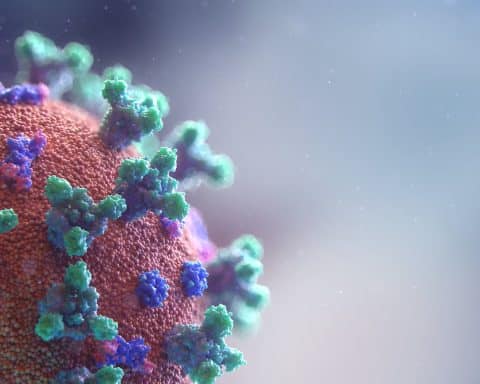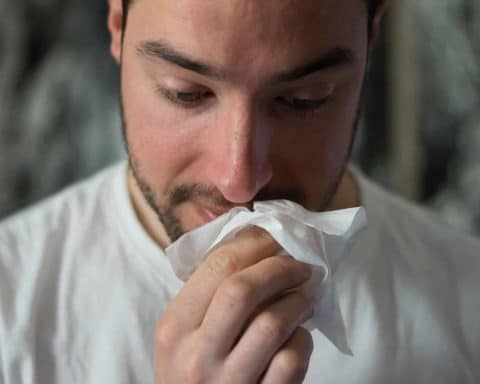Gwenllian Wynne-Jones is a Professor of Nursing at Keele University; Gwenllian’s main areas of interested include understanding the epidemiology of work absence, examining the impact of health on work and how this can best be managed in primary care. She is on Twitter: @gwenllianwynne
Carolyn Chew-Graham is a GP in Central Manchester and Professor of General Practice Research at Keele University; Carolyn’s main areas of interest include the primary care management of people with multiple health conditions and difficult to understand symptoms which are key components of her clinical work. She is on Twitter: @CizCG
The authors are currently undertaking the Work and Vocational AdvicE (WAVE) trial, testing the delivery of vocational advice and support to patients regardless of their health condition.
The cost of sickness absence
Absence from work has a significant cost to individuals and societies. In 2020 118.6 million working days were lost because of sickness or injury in the UK1 -this is the lowest level of sickness absence in a decade as the influence of national restrictions and home-working have impacted on this figure. The cost of sickness absence in the UK in 2018/19 was an estimated £16.2 billion with musculoskeletal pain and metal health problems accounting for most of this absence, but since April 2020 14% of sickness absence was as a result of Covid-19.1
Supporting people back to work
In the UK there is limited access to occupational health services for the majority of employees, with just 13% of employers providing access to occupational health services.2 Most employers providing occupational health services are large organisations rather than small and medium enterprises who employ an estimated 15.7 million people.3 For those employees without access to occupational health, General Practitioners (GPs) play a key role through their part in issuing fit notes.
The fit note has been in use since 2010 and was introduced to effect a change in culture around sickness absence from previously termed “sick note”. The terminology of the ‘fit note’ emphasises the requirement for a discussion about assessment of fitness for work and to improve communication about what a patient could do at work.4 Whilst fit notes have provided a shift in public policy around the area of work absence, they have not been implemented as intended. and there are concerns around limited training, time pressures and misunderstanding of the purpose of the fit note amongst key stakeholders.5
However, fit notes do provide an opportunity for GPs to provide advice around the benefits of returning to work and to support that return to work.
How has COVID-19 impacted on how fit notes are issued?
As a result of the pandemic many practices have implemented remote consulting and online requests for fit notes are now common. But this online request for a fit note means there is no discussion around an individual patient’s health and work, which widens the gap between those with access to occupational health and those without in supporting people back to work after a period of absence. Furthermore, recent government legislation has been put in place to temporarily extend the period of self-certification from the current seven days to 28 days (effective between 17th December 2021 and 26th January 2022).6 The extension of this period of self-certification is likely to have significant consequences for those struggling to return to work after a period absence and essentially makes access to good occupational health advice even more challenging for many.
Impact of Covid on absence from work
Aside from the impact of Covid on how sickness absence is managed in primary care, we should consider the impact of long Covid on an employee’s ability to work. It is estimated that up to 1.3 million people on the UK were experiencing long Covid at the end of 2021, with 65% of these people reporting that it had an adverse effect on their day-to-day living.7 A recent international cohort study reported that 42% of participants were undertaking a reduced work schedule compared to pre-illness and an additional 23% were not working as a result of their long Covid symptoms8 GPs can be supported in managing those patients with long covid back into work if they are able to talk to patients when a fit note issued and though the use of evidence-based advice.9
How can we improve the delivery of occupational health in primary care?
It is important that services to support the management of health and work are developed and tested in primary care, to avoid patients slipping into long term absence and the associated detrimental effects of this on patients’ health and financial state. In 2018 we published the Study of Work and Pain (SWAP) trial which demonstrated that vocational advice delivered in primary care, predominantly over the phone, can support patients to return to work sooner, improves their confidence to manage their pain at work and increases their performance at work.10
Conclusion
With changes to remote consulting driven by the pandemic, the loss of the opportunity for a GP and patient to discuss health and work prior to the issuing of a fit note is unlikely to encourage or support people to return to work in a safe and timely manner. We need to explore alternative models of service delivery to support primary care in providing occupational health advice alongside the fit note.
References
1. Office for National Statistics, Sickness absence in the UK labour market 2020: https://www.ons.gov.uk/employmentandlabourmarket/peopleinwork/labourproductivity/articles/sicknessabsenceinthelabourmarket/2020#sickness-absence-data
2. Young V, Bhaumik C. Research Report No 750. Health and well-being at work: a survey of employers. Department for Work and Pensions. London. 2011
3. White S. Business population estimates for the UK and regions 2016. Department for Business, Innovation and Skills. London. 13 October 2016.
4. Evaluation of the Statement of Fitness for Work (fit note): quantitative survey of fit notes: https://assets.publishing.service.gov.uk/government/uploads/system/uploads/attachment_data/file/273913/rrep841.pdf
5. Welsh VK, Mallen CD, Wynne-Jones G, Jinks C. Exploration of GP’s views and use of the fit note: a qualitative study in primary care, British Journal of General Practice, (2012), Vol 62(598) pg 363-70
6. The Statutory Sick Pay (Medical Evidence) Regulations 2021: https://www.legislation.gov.uk/uksi/2021/1453/made
7. Office for National Statistics: https://www.ons.gov.uk/peoplepopulationandcommunity/healthandsocialcare/conditionsanddiseases/bulletins/prevalenceofongoingsymptomsfollowingcoronaviruscovid19infectionintheuk/6january2022
8. Davis H.E, Assaf G.S, McCorkell L, Wei H Low R.J. Re’em Y, Redfield S, Austing J.P, Akrami A, Characterizing long COVID in an international cohort: 7 months of symptoms and their impact. EClinicalMedicine (2021) Vol 38 101019
9. Madan I, Briggs T, Chew-Graham C, Supporting patients with long Covid return to work, British Journal of General Practice (2021) Vol 17(712): 508-509
10. Wynne-Jones G, Artus M, Bishop A, Lawton S, Lewis M. Jowett S, Kigozi J, Main C, Sowden G, Wathall S, Burton A.K, van der Windt D, Hay E.M, Foster N.E, Effectiveness and costs of a vocational advice service to improve work outcomes in patients with musculoskeletal pain in primary care: A cluster randomised trial (SWAP trial ISRCTN 52269669), Pain, 2018;159(1):128-138
Featured image by Scott Graham on Unsplash








